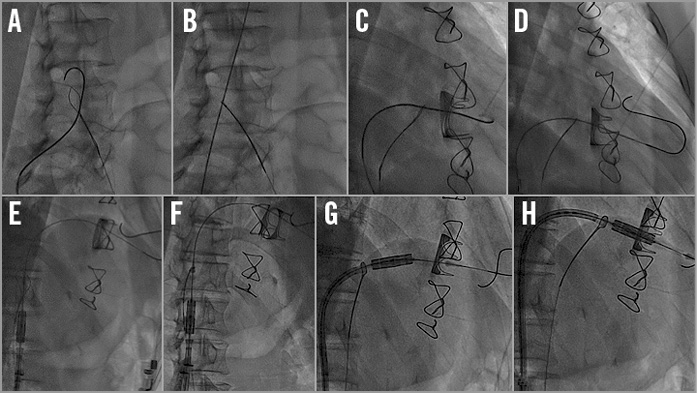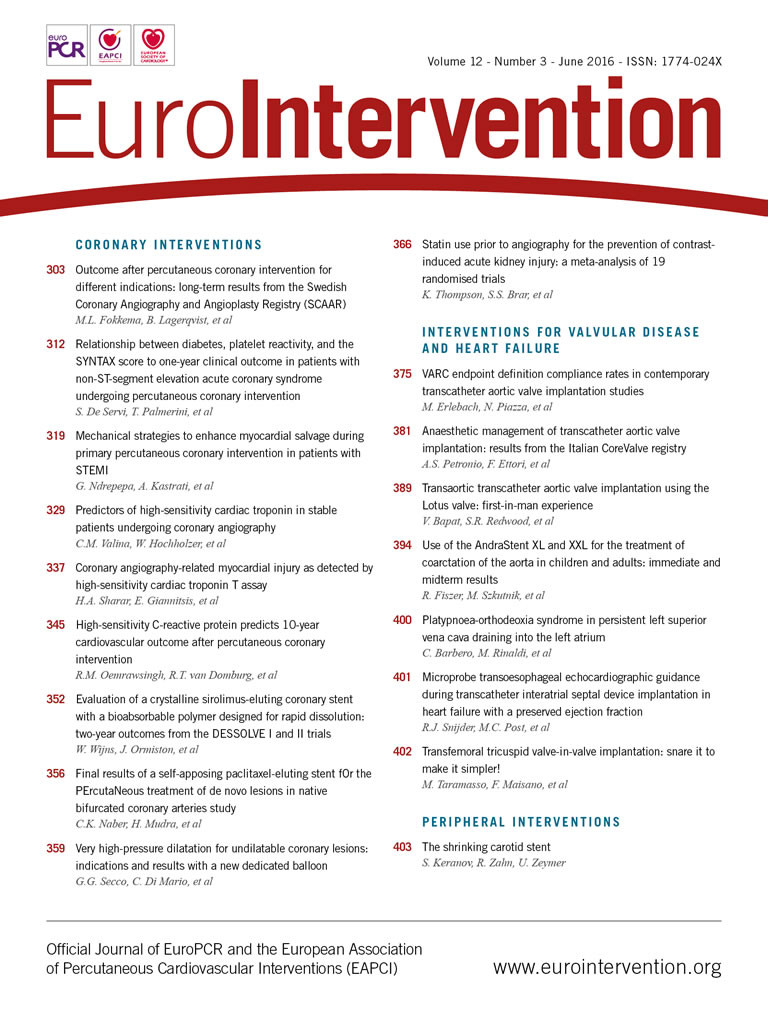
The tricuspid valve is more often addressed from a transjugular approach, due to a more favourable angle between the superior vena cava and the tricuspid valve plane.
Taking into consideration that the decision about the approach has to be made for each individual patient depending on the patient’s anatomy, the more conventional and intuitive transfemoral approach may be technically challenging in most cases, due to an unfavourable narrow angle between the inferior vena cava and the tricuspid valve, which may preclude positioning of the prosthesis, particularly when larger and rigid devices have to be deployed, such as the Edwards valve. In such conditions, obtaining optimal coaxiality to perform a safe and precise implant may be challenging or even impossible. We here report a simple and reproducible trick to overcome this technical challenge in a transfemoral tricuspid valve-in-valve (TVIV) procedure.
We performed two cases of transfemoral TVIV, where a snare from the contralateral side was used to facilitate coaxiality between the prosthesis and the tricuspid plane, thereby allowing proper alignment (Figure 1).

Figure 1. Illustration of the technique. A) & B) Snaring of the Back-Up Meier wire in the inferior vena cava. C) & D) “Snare-guided” crossing of the tricuspid valve. E) & F) The GooseNeck is drawn back and the tip of the Commander catheter is snared. G) & H) The GooseNeck is pulled to optimise the angle and obtain coaxiality.
The interventions were performed in a hybrid room, under local anaesthesia and fluoroscopic guidance, as usual. Bilateral femoral venous accesses were arranged. A Back-Up Meier™ wire (Boston Scientific, Marlborough, MA, USA) was advanced via the right femoral access. A 30 mm GooseNeck® snare (ev3/Covidien, Plymouth, MN, USA) was introduced through the left access and used to snare the wire in the inferior vena cava. The tricuspid valve was then crossed with the pre-shaped Meier wire; crossing of the valve was facilitated by pulling the GooseNeck snare, in order to make the angle more favourable. The transcatheter valve was advanced over the wire and the GooseNeck snare was pulled back in order to snare the tip of the Commander catheter (Edwards Lifesciences, Irvine, CA, USA). Tension was applied by pulling on the GooseNeck snare, thereby further flexing the Commander catheter while crossing the tricuspid valve. With this manoeuvre optimal coaxiality is obtained. The valve was then deployed under rapid pacing.
By snaring the Commander catheter, flexion of the system can be increased by simple pulling on the snare, thereby adapting the angle of the catheter to the patient’s anatomy. The routine use of this technique has the potential to overcome the most challenging drawback of the transfemoral approach for TVIV procedures.
Conflict of interest statement
The authors have no conflicts of interest to declare.

